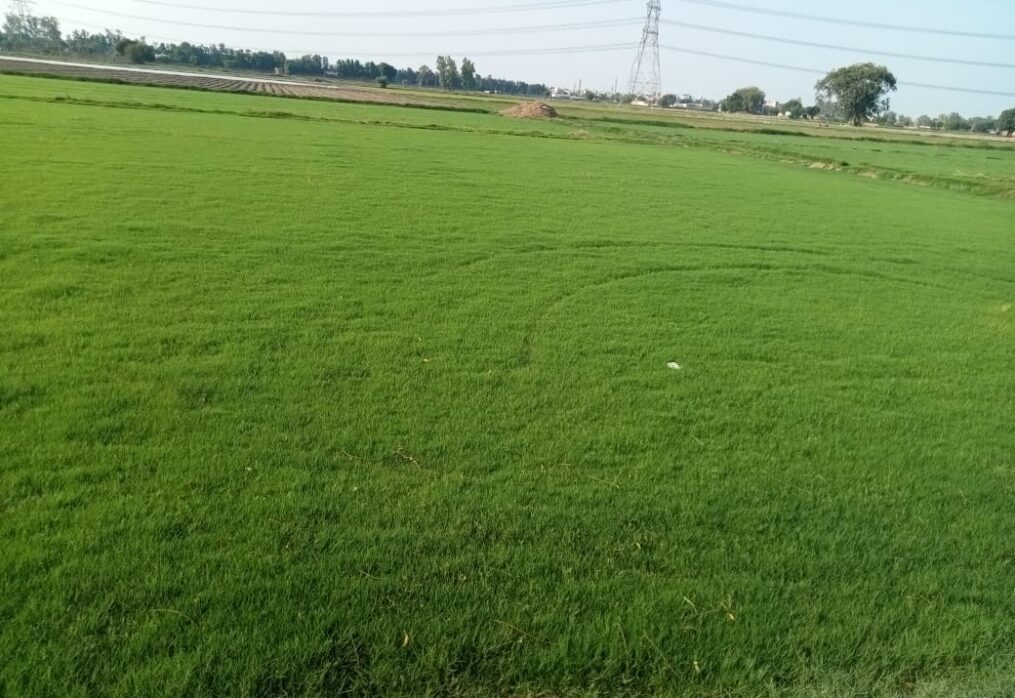How to Get Grass Green Again
Verdant grass is the envy of the neighborhood, and your backyard is a calm haven. However, what should you do if your once-vibrant lawn begins to fade and turn a lifeless, dismal brown? Remain optimistic! With the appropriate strategy, you can turn your boring lawn into something spectacular. Let’s explore the techniques for creating a masterpiece that is truly green.
Recognizing the Issue
Finding the source of the issue is essential before you start your lawn regeneration process. Is there disease, pests, nutrient deficiency, or drought stress on your lawn? Typical offenders include:
• Drought stress: Brown spots and withering are caused by a lack of water.
• Nutrient deficiencies: Lack of vital nutrients like potassium, phosphate, and nitrogen results in yellowing or light green grass.
• Diseases and pests: Your lawn can suffer greatly from chinch bugs, grubs, and fungal infections. Once the problem has been identified, you can adjust your course of therapy.
Crucial actions for a greener lawn
1. Healthy soil is essential.
• Soil testing: This gives you important information on the pH, texture, and nutrient levels of your soil.
• Amendments: To improve soil structure and fertility, add organic matter, such as compost or manure, based on test findings.
• Core aeration: By relieving compaction in the soil, this procedure improves the entry of air, water, and nutrients.
2. Water conservation:
• Deep watering: To promote deeper root growth, water your grass less frequently, but deeply, as opposed to frequently and superficially.
• Timing: Water first thing in the morning to reduce evaporation and give the blades time to dry before dusk, so averting illness.
• Refrain from overwatering: Excessive moisture can choke roots and foster the growth of fungi that cause illnesses.
3. Take Care of Your Lawn:
• Fertilization: Select a balanced fertilizer made especially for grass. Apply it according to the product’s instructions, taking into account any suggestions from the soil test.
• Organic options: For a more ecologically friendly solution, look at organic fertilizers like fish emulsion or compost tea.
4. Mowing Issues:
• Appropriate height: Mow your lawn at the height suggested by the type of grass you have. Increased grass height helps to shade roots, hold moisture, and suppress weed growth.
• Sharp blades: When grass blades are ripped by dull blades, illnesses can spread.
• Leave clippings: Adding mulch to grass clippings helps the soil retain nutrients.
5. Excess seed for density:
• Thinning areas: Using a proper grass seed blend, overseeding may help fill in any barren spots in your lawn.
• Preparation: Before planting, rake the soil and remove any debris.
• Consistent care: To help young seedlings establish, give them enough water, sunshine, and fertilizer.
6. Disease and pest control:
• Identification: By accurately diagnosing the issue, determine the appropriate course of action.
• Integrated pest management: Before using pesticides, consider precautions and natural cures.
• Expert assistance: For serious illnesses or pests, seek the advice of a lawn care specialist.
7. Patience and persistence:
• Taking care of a lawn is a journey: improving a failing lawn takes time.
• Consistency: Long-term success requires regular upkeep.
• Take pleasure in the process: A gorgeous lawn is the fruit of your labors.
Extra Advice for a Greener Lawn
• To enhance seed-to-soil contact, think about utilizing a grass roller.
• Refrain from walking on the grass too much, especially when it’s damp.
• To prevent pet damage to your yard, provide specific relief spots.
• Try out various grass varieties to determine which ones work best in your environment and soil. You may create a verdant haven that will make your neighbors green with envy by carefully observing these recommendations and modifying them to suit the unique conditions of your lawn. Recall that a well-maintained lawn not only enhances the appearance of the surrounding area but also improves air quality and serves as a home for beneficial insects. Would you want to concentrate on a particular lawn issue, such as weeds, brown areas, or problems with shade?
I recommend checking out:
- How to plant lawn grass: A Quick Guide
- Natural Weed and Grass Killer Recipe for a Chemical-Free Lawn
- What type of machine is used to cut grass?
- 5 gorgeous flowering plants to bring home in summer
- 10 Stress Relieving Indoor plants for home
- 10 plants you can easily grow in a bottle
- 5 Easy Tips to Maintain a Tulsi Plant at Home
- 5 Medicinal Plants to Grow at Home
- 10 palm plants to grow at home
Last Updated on 1 year ago by Anjali Mehra Ph.D. in Horticulture (Punjab Agricultural University)
- Best Lawn Grass for High-Footfall Religious Places in Punjab - December 29, 2025
- Why Lawn Grass Fails After Installation (Real Indian Case Studies) - December 25, 2025
- Nilgiri Grass vs Korean Grass – Price, Look & Maintenance Compared - December 23, 2025
